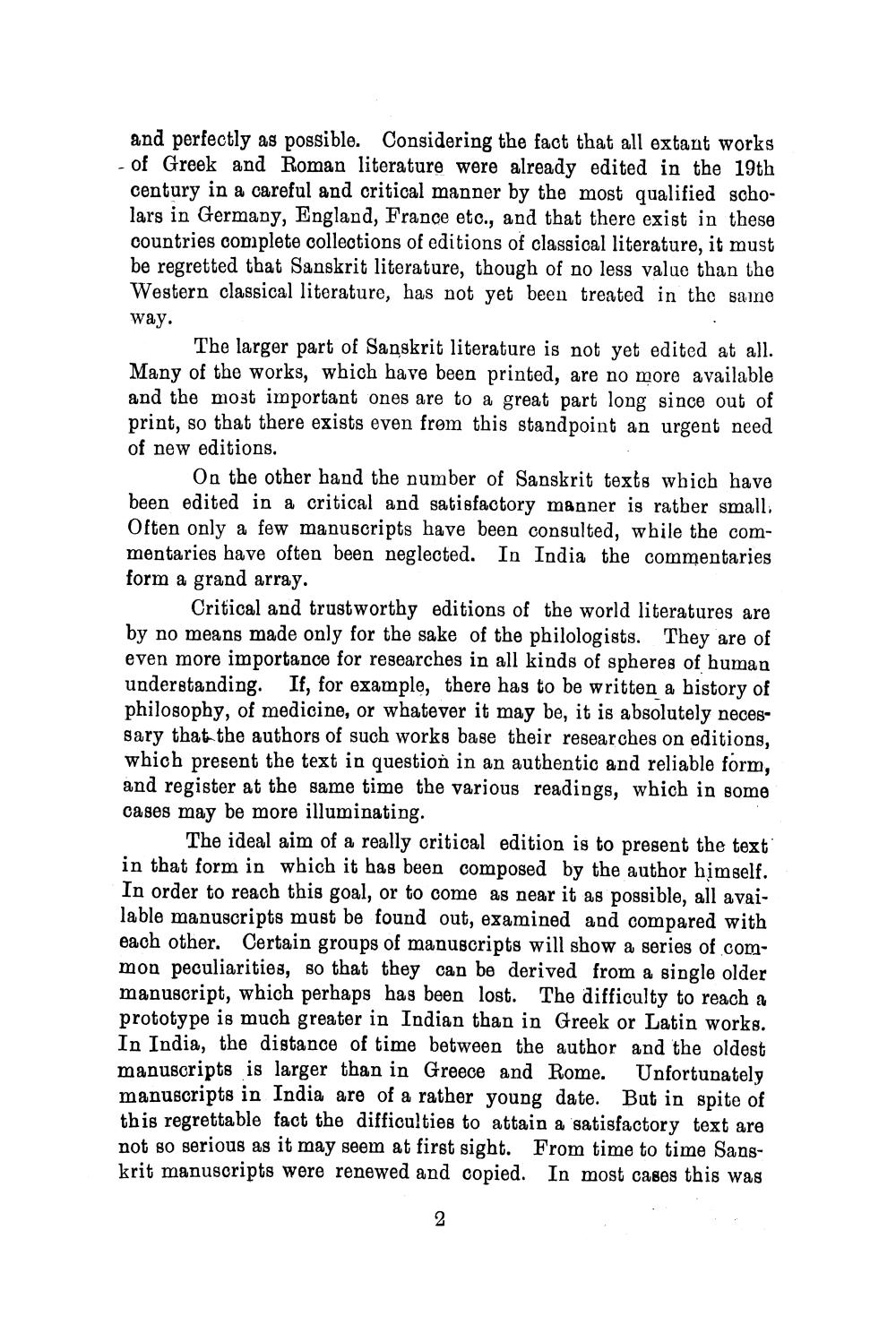Book Title: Satapitaka Author(s): Publisher: View full book textPage 2
________________ and perfectly as possible. Considering the fact that all extant works - of Greek and Roman literature were already edited in the 19th century in a careful and critical manner by the most qualified scholars in Germany, England, France etc., and that there exist in these countries complete collections of editions of classical literature, it must be regretted that Sanskrit literature, though of no less value than the Western classical literature, has not yet been treated in the saine way. The larger part of Sanskrit literature is not yet edited at all. Many of the works, which have been printed, are no more available and the most important ones are to a great part long since out of print, so that there exists even from this standpoint an urgent need of new editions. On the other hand the number of Sanskrit texts which have been edited in a critical and satisfactory manner is rather smalli Often only a few manuscripts have been consulted, while the commentaries have often been neglected. In India the commentaries form a grand array. Critical and trustworthy editions of the world literatures are by no means made only for the sake of the philologists. They are of even more importance for researches in all kinds of spheres of human understanding. If, for example, there has to be written a history of philosophy, of medicine, or whatever it may be, it is absolutely necessary that the authors of such works base their researches on editions, which present the text in question in an authentic and reliable form, and register at the same time the various readings, which in some cases may be more illuminating. The ideal aim of a really critical edition is to present the text in that form in which it has been composed by the author himself. In order to reach this goal, or to come as near it as possible, all available manuscripts must be found out, examined and compared with each other. Certain groups of manuscripts will show a series of common peculiarities, so that they can be derived from a single older manuscript, which perhaps has been lost. The difficulty to reach a prototype is much greater in Indian than in Greek or Latin works. In India, the distance of time between the author and the oldest manuscripts is larger than in Greece and Rome. Unfortunately manuscripts in India are of a rather young date. But in spite of this regrettable fact the difficulties to attain a satisfactory text are not so serious as it may seem at first sight. From time to time Sanskrit manuscripts were renewed and copied. In most cases this wasPage Navigation
1 2 3 4 5 6 7 8 9 10 11 12 13 14 15 16 17 18 19 20 21 22 ... 31
